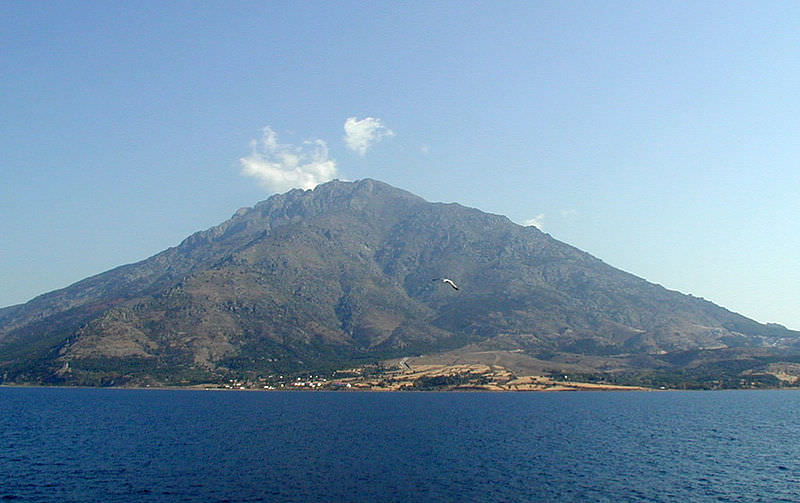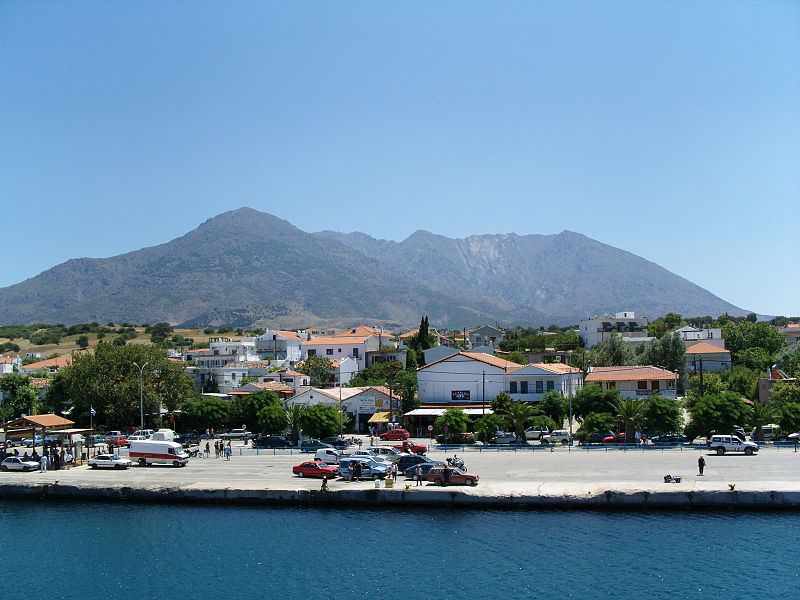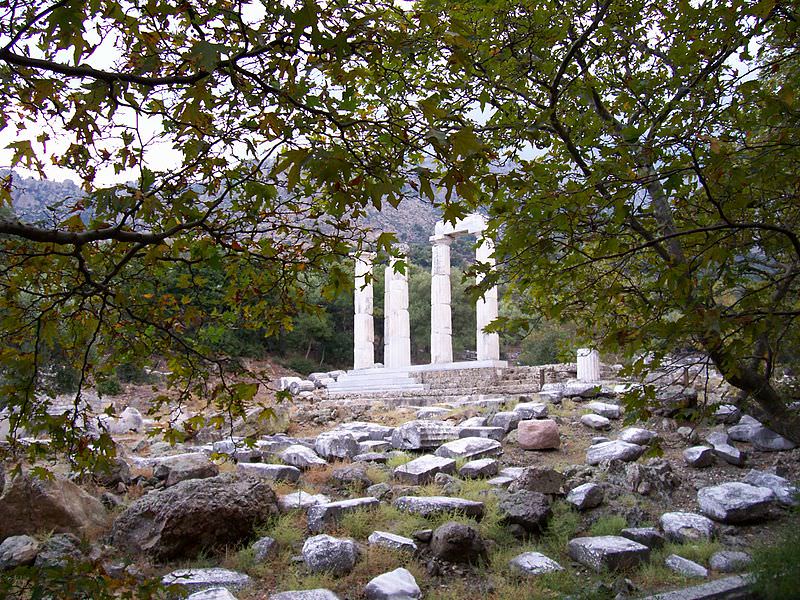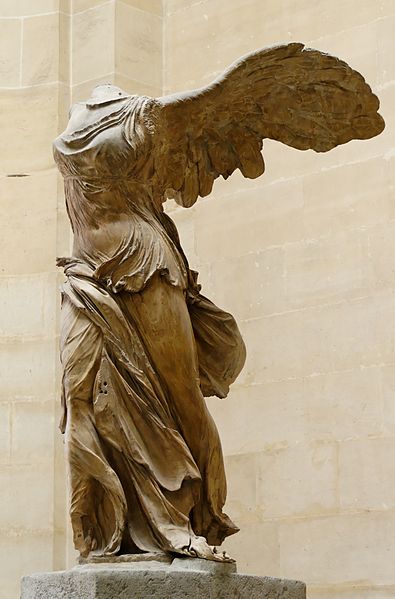Off the coast of Thrace in northern Greece, lies the mystical island of Samothraki. I arrive by bus at Alexandroupolis, a pleasant city near the Turkish frontier. It originated as a small garrison town founded by Alexander the Great, and is now centre of the local tobacco trade. Offshore, in the mist of early morning, the island of Samothraki appears, rising mysteriously out of the sea about 50 km. south.
The ferry trip from Alexandroupolis to Samothraki takes two hours. This small island is one of the most magical places in the whole of Greece. I disembark at the only port, Kamariotissa. Local buses run between the villages on the island, but to absorb the enchanting essence of Samothraki I walk the five kilometers to my destination, the Sanctuary of the Great Gods. This beautiful temple site is located in a luxurious valley between the sea and Mount Fengari. It was here that King Philip II of Macedon met his bride, the bewitching young Epirote princess, Olympias. They were soon to wed and become the parents of a remarkable son, Alexander, who became known as “Alexander the Great”.
All around the vegetation is lush. The wind hisses through fields of dried grass where hundreds of butterflies flit among the wildflowers. The sanctuary and its mystic religion gave this island its special character. It was used as early as the 5th century BC. The prime divinity was the Great Mother, a goddess of pre-Greek origin known as Axieros, but identified by the Greeks as Demeter. Splendid buildings were erected in her honor, most if not all, paid for by donations from the Royal House of Macedon which had a special allegiance to the cult. The Great Mother’s virile young consort Kadmilos (Hermes) was also worshipped here as well as the fabled Kabeiroi twins, later known as Castor and Pollus, the Dioscuri. In comparison to the Olympian gods who were frivolous and fickle, the deities of Samothraki were venerated for their immense power.
The magnificent marble pillars of the temple loom ahead of me in a grove of trees. At the time of Philip’s marriage to Olympias, this shrine was unrivalled as the centre of religious life in northern Greece and the island was considered to be divine property. All the rites were conducted in the ancient Thracian language and were open to men and women, free or enslaved. It had an international character; the Samothracians annually sent out invitations to the festival throughout Greece and Asia Minor so ambassadors from many cities came to offer sacrifices here.
On a windy knoll stands the ruins of a small temple built in 318 BC, dedicated to Alexander and his father Philip II. The inscription says: Kings Philip and Alexander to the Great Gods.” I wander around and find the ruins of the sacristy, an antechamber where the initiates would wait before the rites. The main ceremony took place in the anaktoron. Just beyond this is the arsinoein, built in 289 BC, once the largest cylindrical structure in Greece, and a gift to the Great Gods from the Egyptian queen Arsinoe. Nearby is the sacred rock, the site’s earliest altar. I stand in awe in the sacred site and place my hands on the magnetic lodestone of Samothraki, which represents the Great Mother. The russet-colored stone burns beneath my touch. Supplicants used to hang iron votives here. Every member of the Macedonian royalty was initiated into the cult of the Great Mother. At one time, Alexander must have stood in this very place.
The most prominent structure at the site is the beautiful Doric hieron where five of the columns have been restored. There are also remnants of a theatre, near which is the place where the famous Winged Victory, a marble statue of the goddess of Victory, Nike, once stood. This most celebrated relic is now in the Louvre of Paris, but you can see a plaster copy of it in the museum which also displays terra-cotta figurines, vases and jewelry.
There are other small towns on the island worth exploring, too. It’s a popular island for hikers though it isn’t too touristy. There are several good beaches; Pachia Ammos is 15 k. from Kamariotissa and has a sandy beach. A round-the-island tour boat will take you on a day trip to some of the island’s best viewpoints and beaches. And in the town of Kamariotissa there are good tavernas providing a vibrant night-life.
If you go, several ferries leave from Alexandroupolis daily. There are two per week from Kavala during the summer months.
Written by W. Ruth Kozak for EuropeUpClose.com






Buzz June 2013
Thursday 7th of August 2014
[…] Kozak had two stories published in EuropeUpClose this month: Stonehenge and Samothraki, Greece. Her novel “Shadow of the Lion” is currently being read by a publisher in UK. Fingers […]